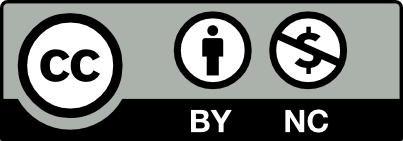Checking for non-preferred file/folder path names (may take a long time depending on the number of files/folders) ...
This resource contains some files/folders that have non-preferred characters in their name. Show non-conforming files/folders.
This resource contains content types with files that need to be updated to match with metadata changes. Show content type files that need updating.
Data from Beetle-Moorcroft et al. (2021), Exploring conceptual models of infiltration and groundwater recharge on an intermittent river: the role of geologic controls
| Authors: |
|
|
|---|---|---|
| Owners: |
|
This resource does not have an owner who is an active HydroShare user. Contact CUAHSI (help@cuahsi.org) for information on this resource. |
| Type: | Resource | |
| Storage: | The size of this resource is 63.5 KB | |
| Created: | Jun 14, 2020 at 4:51 p.m. | |
| Last updated: | Apr 05, 2021 at 5:37 p.m. | |
| DOI: | 10.4211/hs.6d0860dfc4d949b8a0b2202e0fc31e9c | |
| Citation: | See how to cite this resource |
| Sharing Status: | Published |
|---|---|
| Views: | 891 |
| Downloads: | 22 |
| +1 Votes: | 1 other +1 this |
| Comments: | No comments (yet) |
Abstract
These data are described in Beetle-Moorcroft, F., Shanafield, M., and and Singha, K. (2021). Exploring conceptual models of infiltration and groundwater recharge on an intermittent river: the role of geologic controls. Journal of Hydrology-Regional Studies, https://doi.org/10.1016/j.ejrh.2021.100814.
Non-perennial rivers and streams are the main surface water resource in arid climates, and streambed infiltration in these systems is a vital component of groundwater recharge. Subsurface geology controls the extent and location of streambed infiltration and therefore impacts both streamflow and groundwater levels. This study explores geological controls on groundwater recharge through an intermittent river streambed using scenario evaluation with numerical models constrained by field observations. Our conceptual model included five fundamental variations in the system that could impact where and how much recharge is possible: 1) the presence of a fault; 2) variation in the alluvial aquifer hydraulic conductivity; 3) variation in the thickness of the streambed; 4) presence or absence of a confining unit; and 5) groundwater withdrawals via pumping. To achieve a realistic outcome, we parameterized the model using field observations from the Alamosa River in Colorado as an example. Scenarios that changed hydraulic conductivity values resulted in the most notable changes to infiltration, streamflow, and deep aquifer recharge; conversely, variations in streambed thickness had the least impact. The extent to which streambed infiltration occurs is dependent on streambed properties as well as the hydraulic properties of the underlying alluvial aquifer, and this in turn controls the impacts on streamflow. This research shows that subsurface heterogeneities are a fundamental control on non-perennial rivers’ hydrogeologic systems and are key to their resilience.
Subject Keywords
Coverage
Spatial
Temporal
| Start Date: | |
|---|---|
| End Date: |
Content
Readme.txt
README.txt Stream Discharge.zip Files: VP-1_Discharge_8_6_19.csv VP-1_Discharge_8_7_19.csv VP-2_Discharge_8_7_19.csv VP-2_Discharge_8_8_19.csv Instruments used: Velocity Meter: Hach FH950 Flow Meter (m/s) Wading Rod: Rickly USGS Top Setting Wading Rod (cm) Data Collected: Distance (m) along measuring tape, Depth (cm) - height of water column, Velocity (m/s) - taken at 2/3 depth Base Model Files.zip MODFLOW 2005 Input Files: Base_Model_3_1_20.nam - name file, contains the names of all input files Base_Model_3_1_20.bas - basic package file Base_Model_3_1_20.dis - discretization file Base_Model_3_1_20.lpf - layer property flow file Base_Model_3_1_20.zone - zone file Base_Model_3_1_20.pcg - preconditioned conjugate gradient package file Base_Model_3_1_20.oc - output control file Base_Model_3_1_20.sfr - streamflow routing package file Description: these files are for the base case model, scenario 0 Resistivity.csv Instruments Used: Iris Syscal Pro Resistivity Meter Description: 3 Dipole dipole surveys were collected along the same linear transect, the resistances for the three runs were averaged. The standard deviation of the three runs was used to compute a data weight associated with each measurement. Data Collected: Resistence (ohms), Data weight (unitless) File Structure: Line 1: number of quadrupoles collected Lines 3-1159: columns explained in Line 2 Drone Magnetometer Data was collected by Juniper Unmanned (JU) and International Geophysical Services (IGS). These data may be available upon request if consent is granted by JU and IGS.
Related Resources
| This resource is described by | Beetle-Moorcroft, F. (2020). Exploring geologic controls on infiltration and groundwater recharge on an ephemeral river: a coupled geophysics and modeling approach. MS Thesis, Hydrologic Science and Engineering Program, Colorado School of Mines. |
| This resource is described by | Beetle-Moorcroft, F., Shanafield, M., and and Singha, K. (2021). Exploring conceptual models of infiltration and groundwater recharge on an intermittent river: The role of geologic controls. Journal of Hydrology-Regional Studies. https://doi.org/10.1016/j.ejrh.2021.100814. |
Credits
Contributors
People or Organizations that contributed technically, materially, financially, or provided general support for the creation of the resource's content but are not considered authors.
| Name | Organization | Address | Phone | Author Identifiers |
|---|---|---|---|---|
| Jackie Randell | Colorado School of Mines | |||
| Margaret Shanafield | Flinders University |
How to Cite
This resource is shared under the Creative Commons Attribution-NoCommercial CC BY-NC.
http://creativecommons.org/licenses/by-nc/4.0/

Comments
There are currently no comments
New Comment